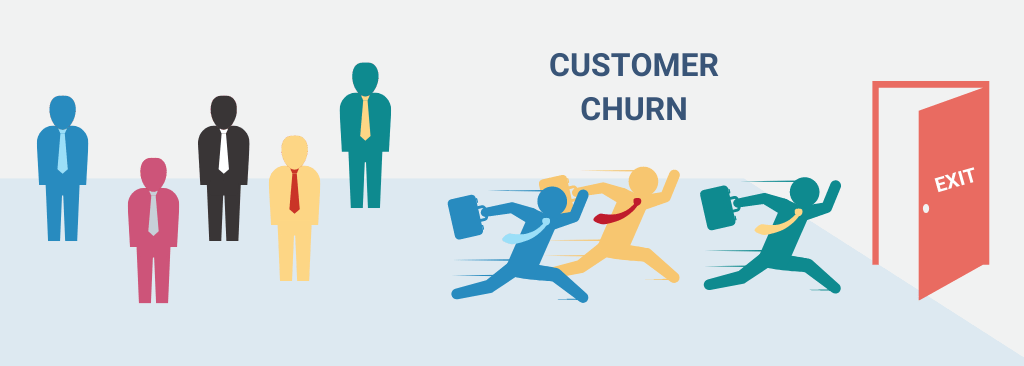Introduction
Customer churn is one of the most costly problems in any business — especially in SaaS, e-commerce, and subscription models. But with the right tools and a predictive approach, churn can be measured, understood, and prevented.
In this blog, we explain:
- 1. How to measure customer churn accurately
- 2. The key drivers of churn
3. How predictive analytics helps reduce churn proactively
What is Customer Churn?
Customer churn refers to the percentage of customers who stop doing business with your company over a specific period.
Churn is a critical indicator of:
- 1. Customer dissatisfaction
2. Product/market misalignment
3. Gaps in onboarding, service, or support

Why Churn Matters:
- 1. Acquiring a new customer costs 5–7x more than retaining an existing one.
2. Even a 5% reduction in churn can boost profits by 25–95% (Bain & Co.).
How to Measure Customer Churn
Basic Churn Rate Formula:
Churn Rate (%) = (Customers Lost During Period ÷ Customers at Start of Period) × 100
Example:
- Start of quarter: 500 customers
- End of quarter: 450 customers
- Churn = (50 ÷ 500) × 100 = 10% churn rate
Types of Churn:
- 1. Voluntary Churn: Customer chooses to leave (e.g., cancels subscription)
2. Involuntary Churn: Payment failure, system errors, expired cards - 3. Revenue Churn: Loss in monthly recurring revenue (MRR), not just customers

Top Reasons Why Customers Churn
- 1. Poor Onboarding Experience
2. Unresolved Support Issues
3. Lack of Product Value Perception
4. Complicated User Experience
5. Pricing Misalignment
Insight: Most churn happens early in the customer journey — especially in onboarding and the first 30–90 days.
What is Predictive Churn Analytics?
Predictive churn analytics uses historical data, behavior patterns, and AI models to forecast which customers are most likely to leave.
How It Works:
- 1. Data Collection: Usage metrics, support logs, survey feedback, payment history
- 2. Model Training: Machine learning identifies signals that precede churn (e.g., reduced logins, low NPS)
3. Risk Scoring: Each customer is assigned a churn probability score
4. Intervention Triggers: Automated workflows are triggered for at-risk customer
Key Signals that Predict Churn

How to Reduce Churn with Predictive Analytics
1. Track Early Engagement Metrics
- – Monitor daily active usage, feature adoption, and onboarding progress.
– Flag users who haven’t completed setup or activated key features.
2. Set Up Real-Time Alerts for Churn Risk
- – Integrate churn risk scores into your CRM.
– Trigger internal alerts when a customer’s behavior drops below thresholds.
3. Automate Outreach and Save Campaigns
- – Trigger personalized emails, offers, or support check-ins based on churn risk.
– Include feedback surveys to understand root causes.
4. Prioritize High-Value Accounts
- – Combine churn probability with CLV to focus retention efforts where they matter most.
– Assign success managers or offer strategic guidance for enterprise clients.
5. Feed Learnings Back into the Product
- – Identify systemic UX issues or value gaps from churn insights.
– Improve onboarding, training, and help content accordingly.
Real-World Example: Churn Reduction in SaaS
A US-based SaaS platform analyzed usage logs, NPS scores, and onboarding progress to create a churn prediction model. Within 6 months:
- – Identified 82% of at-risk accounts with 88% accuracy
– Reduced churn by 22%
– Increased CLTV by focusing on upsells to low-risk, high-value users
How Zykrr Helps You Predict and Prevent Churn
Zykrr’s CXM platform includes:
- 1. Predictive churn modeling based on behavioral and sentiment data
2. Real-time customer risk scoring dashboards
3. Automated alerts and retention workflows
4. Integration with CRM and support tools for proactive outreach - Request a Demo with Zykrr
Frequently
Asked Questions
-
What’s a healthy churn rate for SaaS?
A monthly churn rate of <5% is considered healthy. For enterprise SaaS, even 1–2% churn can be costly.
-
How much historical data is needed for churn prediction?
Ideally, 6–12 months of behavioral and feedback data yields better model accuracy.
-
Can churn prediction be automated?
Yes. Zykrr and other CXM platforms automate churn risk scoring and trigger intervention workflows in real time.
-
What if I don’t have usage data?
You can still use feedback data (e.g., low NPS or CSAT) and support logs to model churn risk.





















